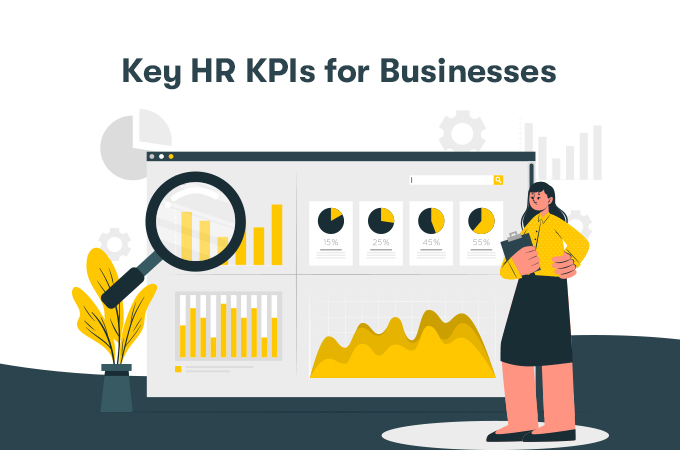Expectations for HR professionals have evolved highly since the pandemic. The rapid adoption of remote work has changed how we work and brought in new metrics to track for the HR department. KPIs or Key Performance Indicators are metrics that measure the performance of a particular activity or process. HR KPIs analyze how well an organization’s HR department is performing in achieving the overall strategy.
Many professional HR analytics software in the market provide tools to measure the success of each metric, thereby aiding the HR team to improve its processes. It includes a dynamic dashboard that consolidates all key data in a central location, making the entire process seamless.
To be successful, HR KPIs need to be:
- Concrete
- Measurable
- Achievable
- Relevant
Let’s look at the most relevant KPIs that the HR department must track for the success of the organization:
- Turnover rate
High employee turnover can never be a positive attribute in an organization. In the wake of the Great Resignation, many businesses are struggling with astounding turnover and attrition rates. There are several costs involved with training and retaining employees that go for a toss once an employee leaves. Experienced employees leaving leads not only to a loss of money but also results in disgruntled employees and low company morale.
The turnover rate can be calculated by:
Turnover rate (%) = (No. of Resigned Employees/ Avg. Number of Employees) x 100
- Absenteeism rate
Employee absence can be influenced by various factors like delays, sick leaves, mental fatigue, and other personal reasons. By tracking this metric, the HR department can plan for future absences and create a strategy to bring down the absenteeism rate. It is important to observe this rate for a while and reduce it because it invariably impacts the business. If the absenteeism rate of your business is exceptionally high, then it’s time that you notice the trends and implement a solution to remediate the situation.
- Employee retention
Retention comes close on the heel of turnover rate. Rather than measuring the number of employees who left, this KPI focuses on measuring the number of employees who were retained by the organization. If the employee retention rate is low, the department can then strategize to improve this and engage employees proactively. Once an employee leaves, the HR department again has to scramble to recruit and train the next talent. Good employee retention levels demonstrate excellent company culture and working environment.
- Recruitment costs
Recruiting employees costs money. There is significant money involved in advertising and running recruitment campaigns to hire the right talent. This takes a significant part of the company budget. Consider factors like how much does it cost on average to recruit and select a new member? How long does it take to fill a vacant position? The time and efforts invested in filling a position also add to the overall cost per hire. These are crucial factors that must be considered to reduce the cost per hire.
- Employee productivity
This KPI measures the productivity of your workforce. It analyzes the efficacy and efficiency of your employees and their ability to get tasks done correctly and on time. Important productivity metrics to track include performance rating and employee productivity rate. To understand this, HR should consider all the factors that impact employee productivity in the long run. This includes the time an employee spends on completing a particular job, their performance, and the quality of the final delivered product.
- Employee satisfaction
Employee satisfaction levels determine how happy and loyal employees are to your business. It is an important metric that has an impact on employee productivity and retention. Employee satisfaction levels depend on a host of factors including work-life balance, availability of growth opportunities, remote and flexible working options, salary and compensation, additional perks, company culture, etc. Companies can measure these through surveys that should be carried out frequently to ensure that key employee demands are met. The happier the employee, the better quality of work they’ll produce.
- Skills and competencies
HR managers should know the skills and competencies of their staff to design training programs that help them gain key skillsets. Map the skills of your staff present at an organizational, departmental, and individual level. Designing the correct education and training programs improves the overall productivity level of the organization and increases their loyalty and satisfaction levels. Having a clear picture of employee skills also provides the organization with a fair idea of how to disburse tasks and compensate them.
Well-formulated and tested KPIs improve the HR operations, and makes the job much easier. It provides a sense of direction to the entire department and makes tasks more streamlined, efficient, and timely.
Paylite HRMS is a one-stop solution for all your HR and payroll requirements. It has been exclusively designed keeping in mind the changing demands of the modern workforce. To book a free demo of the software, visit https://www.paylitehr.com/request-demo.html
